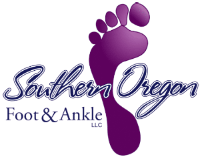 When you’re suffering from heel pain, location matters. That includes in the back of your heel!
When you’re suffering from heel pain, location matters. That includes in the back of your heel!
That’s because “heel pain” is not just one problem, but can stem from a variety of different causes. There is often a big difference between what can cause pain along the bottom of the heel and what can cause pain in the back of it.
Different parts of the heel are connected to different other parts of the body, and are affected by different forces and activities. Knowing where exactly on your heel you are experiencing pain isn’t picky – it’s an important clue in making an accurate diagnosis!
No matter where or what kind of heel pain you may be experiencing, details matter. That’s why we always conduct a full examination and ask you questions about your condition. Never hesitate to let us know anything you might think is important to your case, because it often is.
So, what might pain in the back of the heel mean? There is more than one possible answer.
Causes of Pain in the Back of the Heel
Just to be on the safe side, let’s make sure we’re all on the same page when we refer to “the back of the heel.”
We are not referring to any part of the foot that touches the ground while you walk. Not “the bottom of the foot, toward the back.” We are talking about the part that essentially rises up to connect to the ankle, where you can feel the thick cord of your Achilles tendon.
And, in fact, that is our first stop for potential causes of heel pain.
Achilles Tendinitis
Strain or trauma to the Achilles tendon is a very common cause of pain in the back of the heel. In some cases, the pain might be felt a little higher than that.
That’s because the Achilles tendon has some size to it. It runs from the calf muscles and inserts directly into the heel bone. Damage to the tendon can occur in multiple locations, which of course influences where the pain or tenderness will tend to be the worst.
Achilles tendinitis often results from excessive strain or overuse to the tendon. This can come from too much intensity in exercise or as part of your work environment, in addition to possible abnormalities in the internal structure that place too much pressure on the tendon.
The pain or discomfort associated with Achilles tendinitis tends to develop after activity, but can also be particularly bad the day after activity, after the tendon has been at rest.
Bursitis
This condition is the inflammation of a bursa, a fluid-filled sac found near many joints. The bursa allows tendons and muscles to slide more easily when a joint is moving, but can become tender and swollen if they experience too much strain or aggravation.
While bursitis can sometimes be felt along the underside of the heel, it is most commonly experienced along the back. Pain tends to be most prevalent when walking, running, or standing on your toes. The area itself can also be tender, red, and warm to the touch.
Haglund’s Deformity (Pump Bump)
This deformity creates a bony enlargement on the back of the heel bone that can become easily irritated. In many cases, this enlargement can also interfere with the bursa between the heel bone and Achilles tendon, causing bursitis as well.
While Haglund’s deformity often runs in families, wearing shoes with rigid backs may trigger or further aggravate existing cases. It has the nickname “pump bump” for this reason, but any form of shoe with a stiff back, including dress shoes and skates, can have similar effects.
There are other potential causes of pain in the back of the heel aside from the above three, and it is important to properly identify the source (or sources) of your discomfort before recommending a proper treatment plan.
How to Treat Pain in the Back of the Heel
As with any cause of heel pain in general, it is not always enough to simply identify the condition causing it. We must also understand and address the factors that are contributing to it.
We will always pursue conservative treatments whenever they have a reasonable chance of success – and the vast majority of the time, they do. Parts of a conservative treatment plan may consist of, but are not limited to:
- Wearing better fitting or more accommodating footwear.
- The use of custom orthotics to shift excess forces away from vulnerable areas.
- Stretches and exercises designed to strengthen and condition the heels (and attached structures) to prevent further damage.
- Non-steroidal anti-inflammatory drugs or other medications for relieving pain and swelling.
- Standard rest, icing, and recovery.
- Advanced treatments to accelerate healing of soft tissue injuries.
In more severe cases that do not respond well to conservative measures, surgery might become a consideration. This is very uncommon, however, and we will fully discuss all potential options with you.
Take Heel Pain Out of Your Equation
Wherever your heel might hurt, do not hold off on receiving the care for it that you need. The longer you allow problems in the feet and ankles to remain unaddressed, the more likely they are to become severe or chronic.
Our Medford office is here to help! Schedule an appointment with us by calling (541) 776-3338 or by filling out our online contact form.
